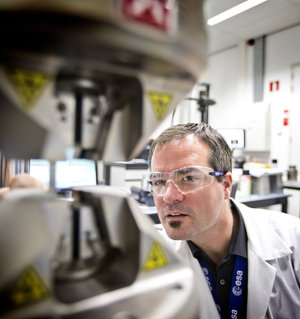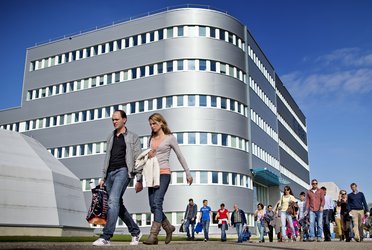Life, Physical Sciences and Life Support Laboratory
What is its role?
The Lab supports work on life and physical sciences instrumentation and experiments for microgravity research, life support and environmental control and other exploration related activities, including experimental flight payloads, life support system development or activities for planetary exploration. The Lab can investigate and test a wide variety of factors, including prolonged effects of low- or hyper-gravities.
But the Lab is more than just a place for testing or rehearsing space mission payloads. Its facilities also support flight projects, such as ATV disinfection and microbiological control campaigns, planetary protection-related activities for ExoMars and technology development activities.
Continue reading below
What services does it offer?
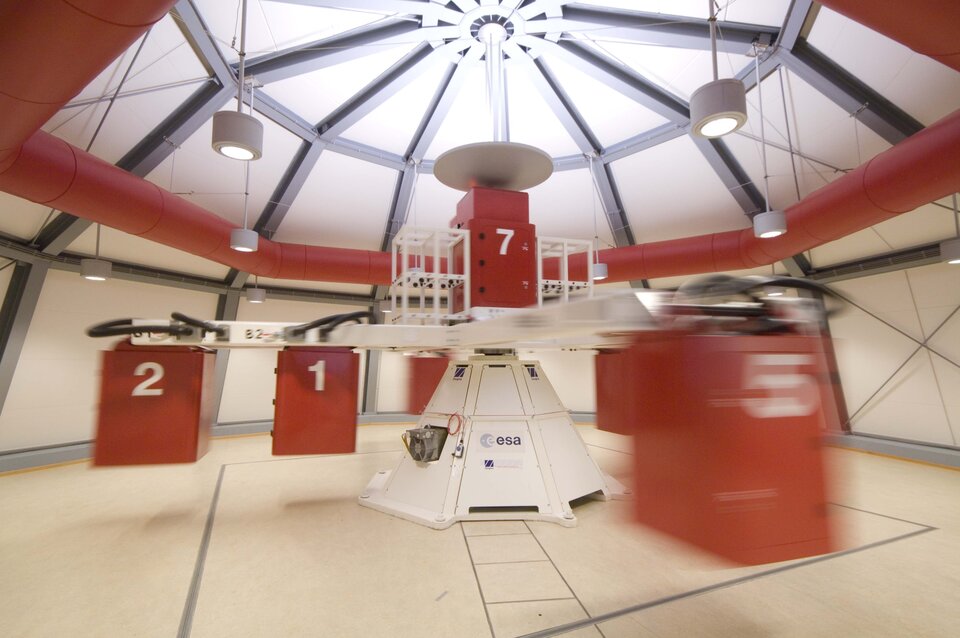
- Assessment and verification of experimental instrument design concepts and
- measurement principles in support of both projects and technology R&D
- Verification of the feasibility of new ideas through rapid breadboarding
- Cleaning, detection, disinfection and sterilisation activities for flight projects
- Support to scientific experiments
- Performance of science verification and flight sequence tests
- Preparation of biological samples for flight and ground-based experiments
- Long-term functional testing of flight facility ground reference models
- Analysis of payload malfunctions or hardware failures
- Gravity simulation experiments.
How is it equipped?
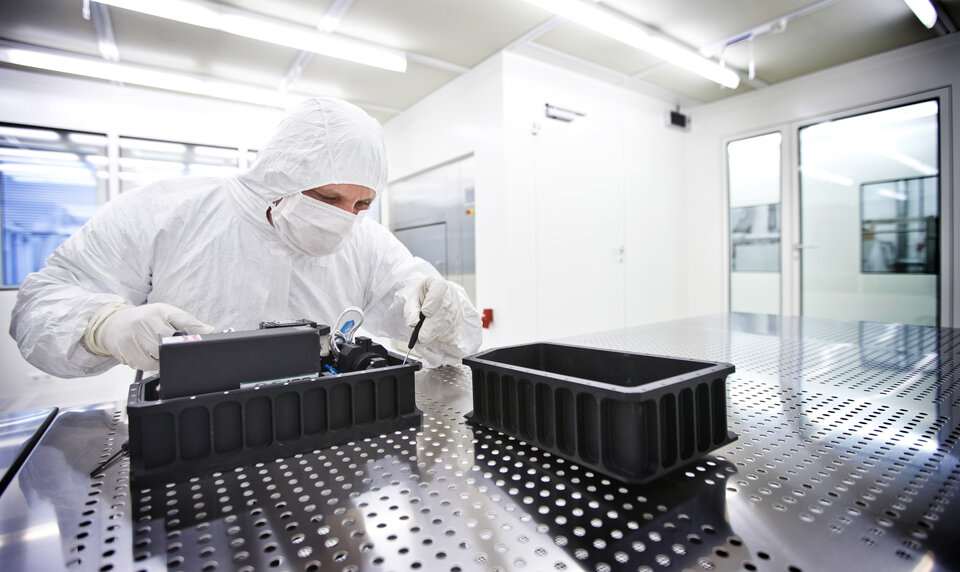
The 720 m2 facility’s state-of-the-art equipment includes high-performance analytical instrumentation for chemistry, microbiology (e.g. inverted and non-inverted microscopes, Diversilab) and water chemistry (e.g. ICP, NPS), a large volume dry-heat steriliser (ISO class 5) as well as all conventional lab items (such as glassware, -18 and 80 freezers) and consumables.
The overall Lab incorporates four facilities: a microbiology lab, fully equipped with two ISO5 HC laminar flow benches, incubators, microscopes, support equipment etc., an analytical lab for performing microbiological and chemical analysis, including an HPLC-MS system (Agilent ion trap MS 500 coupled to an Infinity 1260 HPLC system) for analysis of organics, VITEK system for genetic identification, ventilation hoods for chemical analysis and preparation including a preparation room and chemical storage.
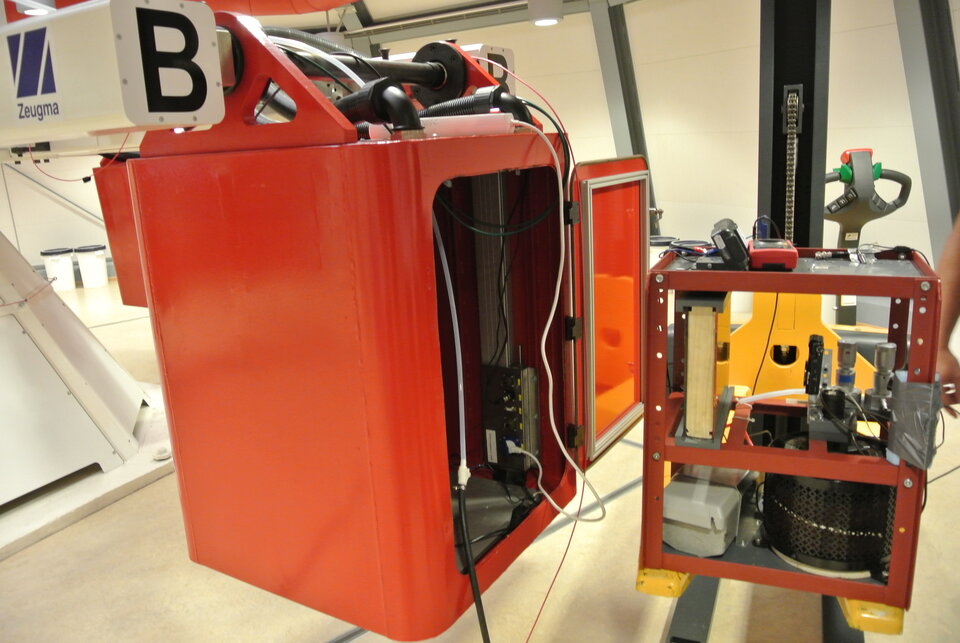
An ISO 1 cleanroom with 35 m2 surface area provides an ultra-clean environment for all hardware activities requiring these high cleanliness levels. The cleanroom is equipped with a Dry Heat Steriliser (ISO 5HC) ultra-clean gas lines, exhaust line and IT infrastructure. A two-stage filter concept HEPA filters and fan filter units (FFU) with ULPA filters plus AMC filters (class A, B C, D) ensure this low particulate environment and AMC-5 environment according to ISO 14644 1-8. The facility can be easily upgraded to AMC-9 or better.
Last not least, the Gravity Simulation Lab enables testing in microgravity and hypergravity. This facility hosts a small random position machine for microgravity simulation and a large diameter (8 m) centrifuge equipped with four arms carrying up to six gondolas, accommodating payloads up to 80 kg. The maximum possible acceleration is 20 g (with four gondolas), which can be spun continuously for six months or longer.
Who are its customers?
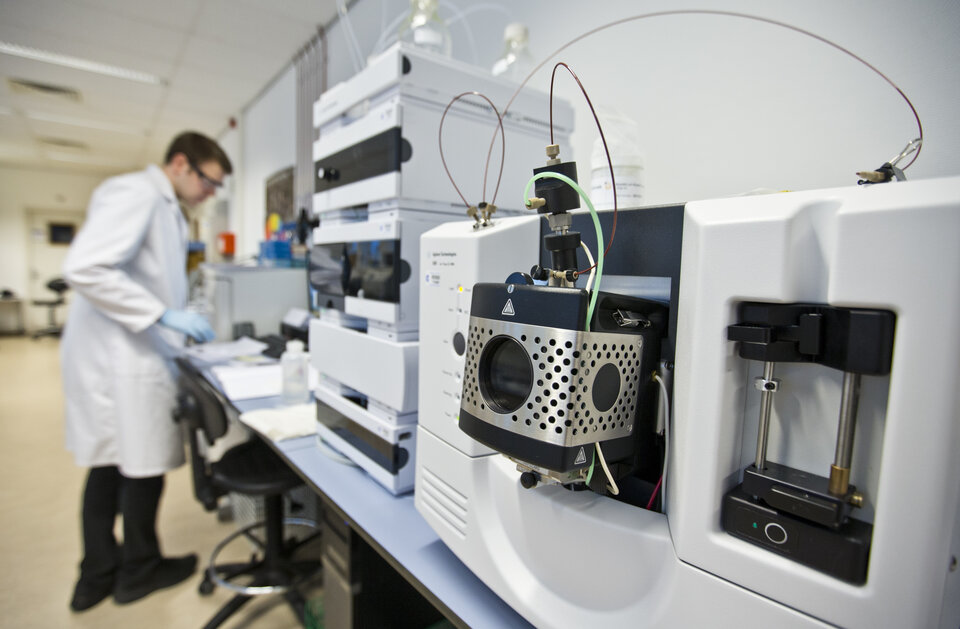
The Lab’s first large-scale use came in 2007, with more than 80 scientists and technicians preparing and testing 35 life and physical science experiments for flight on ESA’s Foton-M3 mission.
The Lab has also contributed to other flight projects, such as developing and validating disinfection procedures for ATV. The Lab also supports MELiSSA (Micro- Ecological Life Support System Alternative) activities, developing regenerative life support technologies.
Customers from industry and international instrument teams use the cleanroom facility to do cleaning and sterilisation process qualification and validation for qualification models and flight hardware for the ExoMars 2016 and 2018 missions.
Its Gravity Simulation Lab is used by the European Low Gravity Research Association, with the centrifuge – jointly funded by ESA and the Dutch government – regularly accessible to student teams through the ESA Education Office’s ‘Spin Your Thesis' campaigns.
Contact
Laboratory Manager Robert Lindner
Robert.Lindner@esa.int





